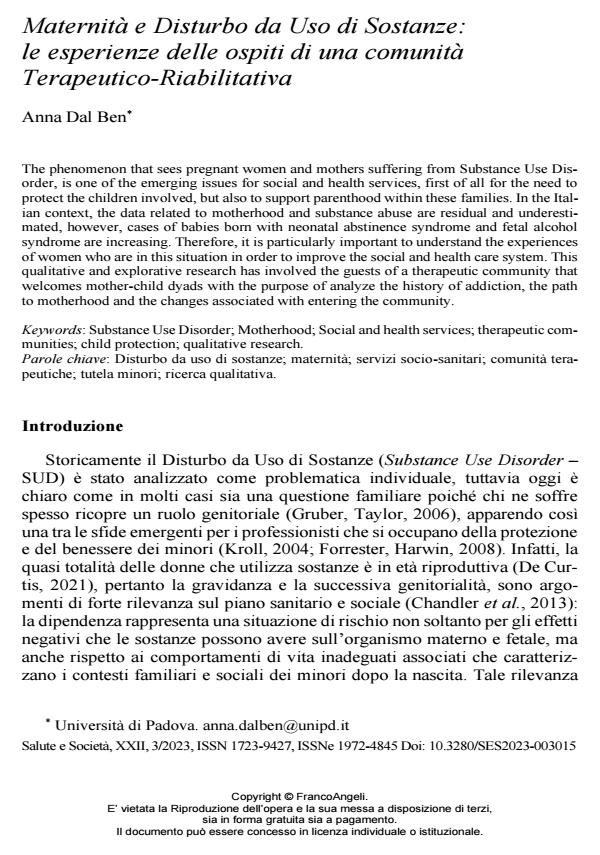Maternità e Disturbo da Uso di Sostanze: le esperienze delle ospiti di una comunità Terapeutico-Riabilitativa
Titolo Rivista SALUTE E SOCIETÀ
Autori/Curatori Anna Dal Ben
Anno di pubblicazione 2023 Fascicolo 2023/3
Lingua Italiano Numero pagine 17 P. 211-227 Dimensione file 304 KB
DOI 10.3280/SES2023-003015
Il DOI è il codice a barre della proprietà intellettuale: per saperne di più
clicca qui
Qui sotto puoi vedere in anteprima la prima pagina di questo articolo.
Se questo articolo ti interessa, lo puoi acquistare (e scaricare in formato pdf) seguendo le facili indicazioni per acquistare il download credit. Acquista Download Credits per scaricare questo Articolo in formato PDF

FrancoAngeli è membro della Publishers International Linking Association, Inc (PILA)associazione indipendente e non profit per facilitare (attraverso i servizi tecnologici implementati da CrossRef.org) l’accesso degli studiosi ai contenuti digitali nelle pubblicazioni professionali e scientifiche
The phenomenon that sees pregnant women and mothers suffering from Substance Use Dis-order, is one of the emerging issues for social and health services, first of all for the need to protect the children involved, but also to support parenthood within these families. In the Ital-ian context, the data related to motherhood and substance abuse are residual and underestimat-ed, however, cases of babies born with neonatal abstinence syndrome and fetal alcohol syn-drome are increasing. Therefore, it is particularly important to understand the experiences of women who are in this situation in order to improve the social and health care system. This qualitative and explorative research has involved the guests of a therapeutic community that welcomes mother-child dyads with the purpose of analyze the history of addiction, the path to motherhood and the changes associated with entering the community.
Parole chiave:Disturbo da uso di sostanze; maternità; servizi socio-sanitari; comunità terapeu-tiche; tutela minori; ricerca qualitativa.
Anna Dal Ben, Maternità e Disturbo da Uso di Sostanze: le esperienze delle ospiti di una comunità Terapeutico-Riabilitativa in "SALUTE E SOCIETÀ" 3/2023, pp 211-227, DOI: 10.3280/SES2023-003015